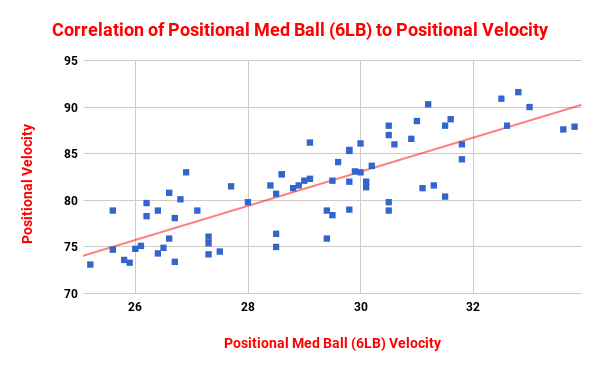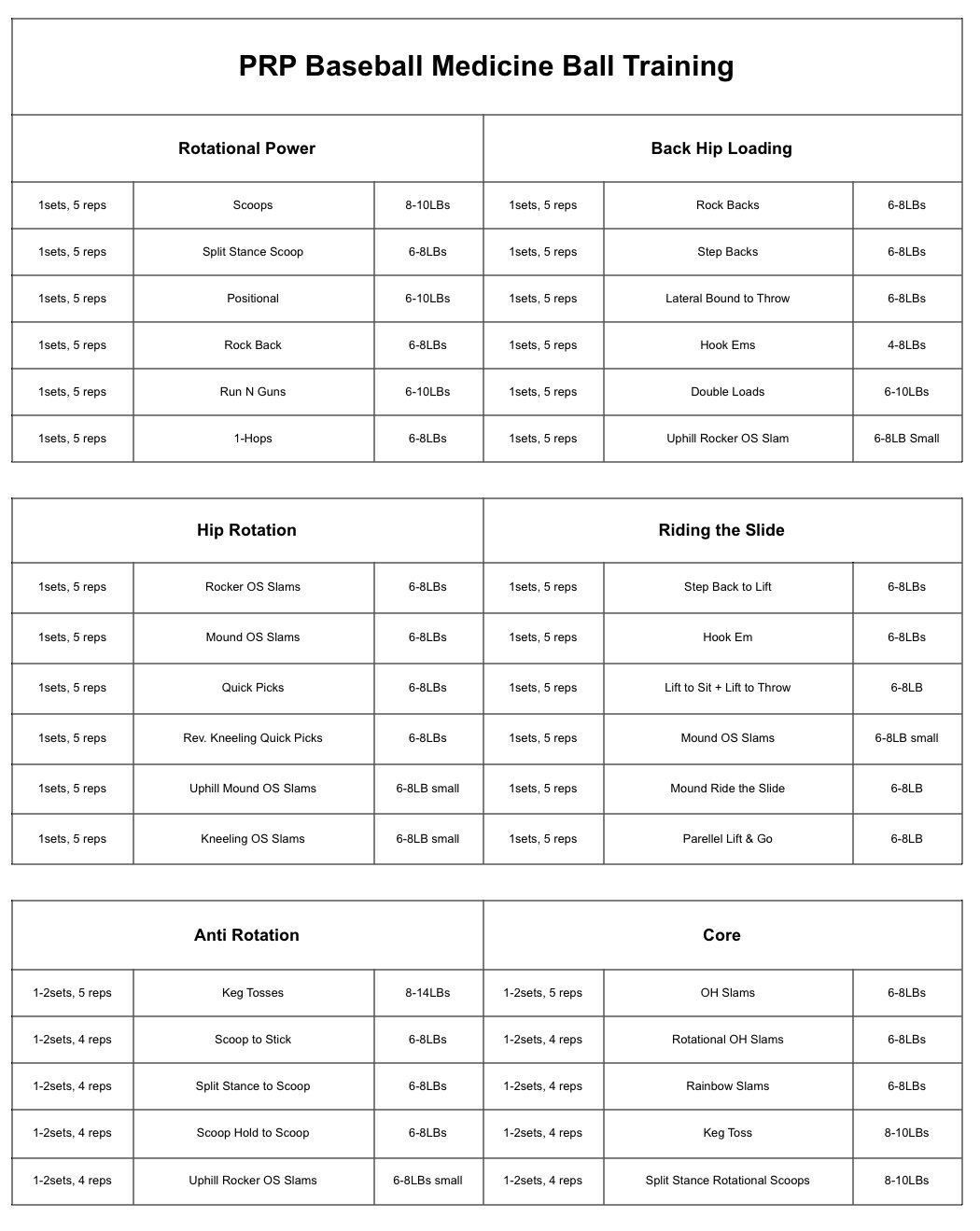The Correlation Between Medicine Ball and Positional Velocity
The Correlation Between Positional Medicine Ball to Positional Throwing Velocity
By Greg Vogt
Overview
Medicine Ball training has been used for decades when training athletes of all sports. Tracking the use and putting athletes through a variety of drills is key to developing power through different planes of motion. This study was done to see if the medicine ball assessments and throwing assessments showed any correlation in our high school athletes.
This program has used medicine ball training with variations in weight and movement patterns for multiple years with assessing velocities. There was a focus this off-season on seeing which athletes excelled in rotational power and how they moved compared to a medicine ball and a baseball. Based on video analysis and velocity, individuals received specific drills to improve rotational power, core stability, and movement patterns. Testing data was collected for pre-testing and post-testing with a 6LB Medicine Ball in the positional movement.
What We Already Know
Overloading a sport-specific movement requires the body to organize itself in a manner that produces more force. Rotational power is a key aspect to both throwing velocity and bat speed. The volume of repetitions, types of movement, and intent of the athlete are all important factors to consider when prescribing medicine ball training for baseball players. You also must take throwing and weight training workload when prescribing volume of medicine ball training.
Data Collection
With 68 athletes training for 10 weeks, medicine ball drills were one aspect of the development of velocity. Velocity assessment occurred in week 1 and week 8 of the training. Throughout the program, different drills and weights of medicine balls were used to develop movement patterns along with rotational power.
The average medicine ball velocity was 29mph while the highest was 33.8mph in the post-assessment. Our assessments included a positional throw and a run n gun with a 6 pound medicine ball. Overall, medicine ball positional velocity went up by an average of over 1.4mph while positional velocity increased by 3.4mph in the program containing 72 athletes. Some did not test Medicine Ball for different reasons. Testing shown above is for the positional throw. 15 of the top 18 throwers were over 30mph with a 6LB Medicine Ball Throw.
Data was tracked in weeks 1 and 8 for peak velocity in a positional medicine ball throw weighing 6 pounds. A Stalker Pro II was used for tracking. Athletes received up to eight 8 throws to find their peak velocity in the medicine ball throw. Throwing velocity was also assessed with a Stalker Pro II in their positional movement with up to 8 throws. Data was measured in weeks 2, 6, and 9. The peak velocity was used for final assessments and comparison.
Results
The trendline shows a steady increase correlating medicine ball and baseball velocity. The R Value was 0.81. There are also several outliers. These outliers tell us a few key things to learn from and how to program their training. A common theme in the outlier was physical strength. Those who struggled in positional velocity but tested well in a medicine ball showcased a deficiency in the trap bar deadlift compared to others with similar body weight. Measuring an athlete’s deadlift and ability to use the ground to produce force translates to how much force they can put into a medicine ball. Another common theme for outliers were body weight. Some of the lighter, more explosive athletes move well a medicine ball but fall under the trend line when it comes to mechanics and sequencing as well.
Rotational power is one the biggest pieces to throwing velocity.
A medicine ball throw is a respectable assessment to add into conditioning programs.
Outliers will provide information to help make adjustments from standard programming and help communicate that to athletes.
Free Drills:
Here are some free drills that we use and the reasoning for doing so in our training. Contact prpbaseball101@gmail.com with any questions about these drills!
PRP Medicine Ball Drills
Summary
Medicine balls have been used years for training of athletes of all sorts. Adding practical medicine ball training can enhance the movements required to throw a baseball. These movements challenge normal throwing patterns by improving lower half usage, sequencing, rotational power, and intent. In summary, we know that medicine ball training for baseball and softball players can build stronger and more powerful athletes. Assessing and developing rotational power through plane specific training can improve your plan to develop throwing velocity. It is one piece of the puzzle that should be implemented in an individualized manner after assessment and with proper dosage.
For more information, e-mail PRPBaseball101@gmail.com or click below for Programming information.




